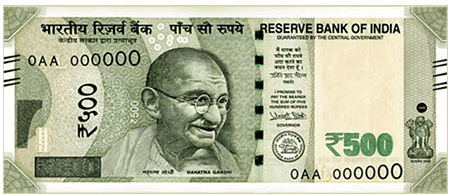Class 2 Maths Joyful Mathematics - Fun at the Fair - CBSE Worksheet Solutions
| Table of contents |

|
| Writing the Amount in Words |

|
| Writing the Amount in Figures |

|
| Multiple Choice Questions. |

|
| Fill in the blanks. |

|
| Word Problems |

|
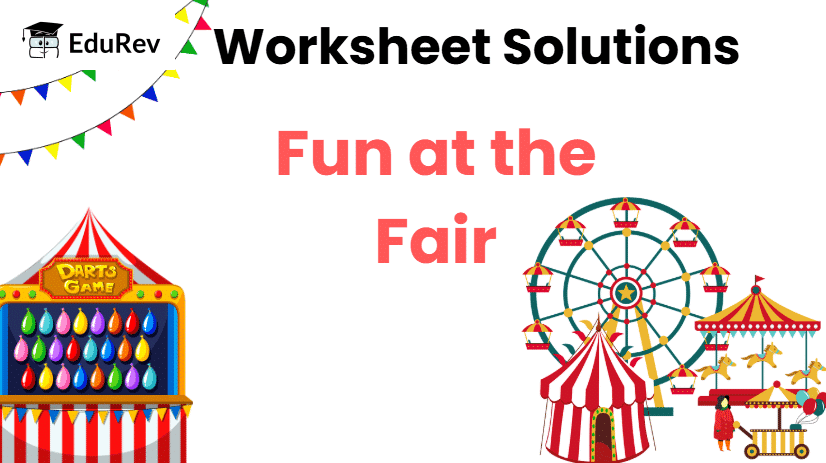
Writing the Amount in Words
₹12 = ________________
₹30 = ________________
₹200 = ________________
₹9 = ________________
₹6 = ________________
Answers:
Twelve rupees
Thirty rupees
Two hundred rupees
Nine rupees
Six rupees
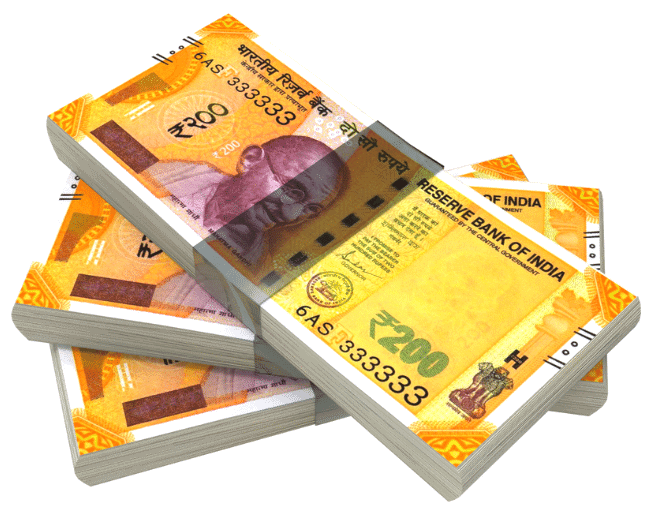
Writing the Amount in Figures
Twelve rupees = ________________
Thirty rupees = ________________
Two hundred rupees = ________________
Nine rupees = ________________
Six rupees = ________________
Answers:
₹12
₹30
₹200
₹9
₹6
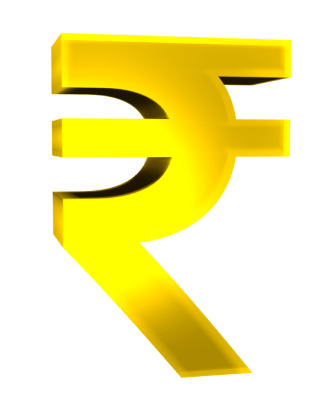
Multiple Choice Questions.
(i) Sudha had a 500-rupee note. She spent Rs 248 in one shop and ₹ 200 in another shop. How much money was left with her?
(a) Rs 50
(b) Rs 42
(c) Rs 52
(d) Rs 48
Ans: (c) Rs 52
Sudha had Rs 500.
She spent Rs 248 + Rs 200 = Rs 448.
Now, 500 - 448 = Rs 52.
So, Sudha has Rs 52 left.
(ii) One book costs Rs 85. What is the cost of 9 such books?
(a) Rs 735
(b) Rs 765
(c) Rs 725
(d) Rs 795
Ans: (b) Rs 765
Each book costs Rs 85.
To find the cost of 9 books, multiply:
85 × 9 = Rs 765.
So, the total cost is Rs 765.
(iii) Nandini has two 5-rupee coins, one 2-rupee coin and three 1-rupee coins. How much more money does she need to buy a ruler that costs Rs 20?
(a) Rs 4
(b) Rs 6
(c) Rs 5
(d) Rs 3
Ans: (c) Rs 5
Nandini has:
2 × 5 = Rs 10,
1 × 2 = Rs 2,
3 × 1 = Rs 3,
So, Nandini has Rs 10 + Rs 2 + Rs 3 = Rs 15.
She needs Rs 20 to buy the ruler, so she needs 20 - 15 = Rs 5 more.
Fill in the blanks.
(i) One Rs 20 note can be changed for ______ Rs 5 coins.
Ans: Four
If you have one Rs 20 note, you can get 4 coins of Rs 5 because 5 × 4 = 20.
(ii)  = ______ rupees
= ______ rupees
Ans: 313
Word Problems
(i) Ritu has Rs 425. Ashu has Rs 152 less than Ritu. How much money does Ashu have?Ans: Money Ritu has = Rs 425
Money Ashu has less than Ritu = Rs 152
Ashu has money = Rs 425 - Rs 152 = Rs. 273

(ii) Manoj has a 100-rupee note. Is it sufficient to buy nine 11-rupee ice cream bars?
Ans: Manoj has Rs 100. Each ice cream bar costs Rs 11.
If he buys 9 ice cream bars, the total cost is: Rs 11 × 9 = Rs 99.
Since Rs 99 is less than Rs 100, Manoj can buy all 9 ice cream bars and still have Rs 1 left.
So, yes, he has enough money.
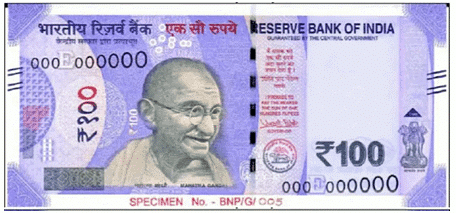
(iii) Find different combinations to make ₹66.
Ans:
1. ₹50 + ₹10 + ₹5 + ₹1 = ₹66
2. ₹20 + ₹20 + ₹20 + ₹5 + ₹1 = ₹6
(iv)The cost of one pen is ₹20. What will be the cost of 9 such pens?
Ans: Cost of 1 pen = ₹20
So the cost of 9 such pens will be = the cost of 1 pen × number of pens needed
=₹20×9
=₹180
The cost of 9 pens will be ₹ 180.
(v) Your sister had 87 rupees with her. Then she gave 37 rupees to you. How much money is left with her now?
Ans: Money that your sister had ₹ 87
The amount that she gave you= ₹37
The total amount left with your sister = ₹ 87 – ₹ 37
= ₹ 50
(vi) Reena bought a bar of ice-cream for ₹15 and chewing gum for ₹5. How much money did she spend?
Ans: Price for the bar of ice-cream = ₹15
Price of chewing gum = ₹5
Total amount Reena spent = ₹15 + ₹5
= ₹ 20
|
1 videos|494 docs
|
FAQs on Class 2 Maths Joyful Mathematics - Fun at the Fair - CBSE Worksheet Solutions
| 1. What are some common activities at a fair that involve money? |  |
| 2. How can children learn about managing money while at a fair? |  |
| 3. What types of coins and bills should children be familiar with when visiting a fair? |  |
| 4. Why is it important for children to understand the concept of change when spending money? |  |
| 5. How can parents help their children make wise spending choices at a fair? |  |

